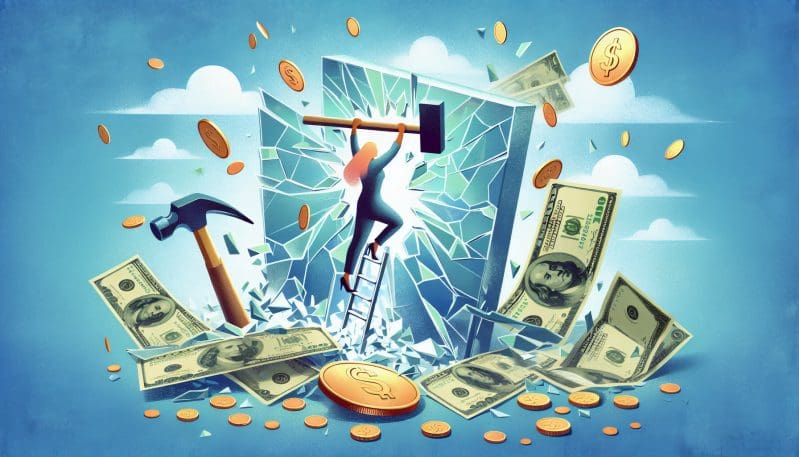Breaking the Glass Ceiling of Financial Literacy: Empowering Women to Achieve Economic Independence
- Home
- Breaking the Glass Ceiling of Financial Literacy: Empowering Women to Achieve Economic Independence
- Editors Desk
- January 25, 2024
- 0 Comments
In the ever-evolving landscape of the modern workplace, the fight for gender equality has seen numerous victories. Yet, despite these strides towards parity, a fissure remains that is often less visible but equally as significant – the gender gap in financial literacy. This disparity not only hinders individual women’s economic independence but also has far-reaching implications for the financial security of families and communities.
Understanding the Root of the Disparity
The causes of the financial literacy gender gap are complex and deeply rooted in societal norms. Traditionally, women have had less access to formal financial education and have been underrepresented in finance-related professions. Moreover, gender roles have historically relegated the management of household finances to men, leading to a gap in practical financial experience for many women.
These systemic barriers are compounded by a lack of targeted financial education resources that address women’s specific life circumstances, such as the gender pay gap, career breaks for childcare or elder care, and longer life expectancies.
Bridging the Financial Knowledge Divide
Addressing the gap in financial literacy among women requires a multifaceted approach. Organizations and policymakers must prioritize financial education that is accessible, relevant, and tailored to women’s unique economic challenges and goals. This includes providing resources and tools that take into account the realities of being a working woman in today’s society, from negotiating salaries to long-term investment strategies.
Innovative financial platforms and programs have emerged, offering mentorship, networking, and educational resources to help women take charge of their financial futures. Success stories from these initiatives serve as powerful testimony to the transformative power of financial knowledge.
Empowering Women, Strengthening Economies
Financial literacy goes beyond just personal benefit; it is a catalyst for broader economic empowerment. When women are financially literate, they make more informed decisions that contribute to their own economic stability and that of their families. Studies have shown that women are more likely to invest a larger portion of their earnings back into their families and communities, thus amplifying the positive impact of their financial acumen.
Actionable Steps Forward
To realize the vision of a financially literate and independent female workforce, concrete steps must be taken. Organizations can implement workplace financial education programs, and make resources readily available to their employees. Policymakers can advocate for curriculum changes to include financial education in schools, ensuring that the next generation of women enters the workforce with a strong financial foundation.
At the individual level, women can seek out financial learning opportunities, leverage digital tools and resources, and support one another through mentorship and community-building.
In conclusion, bridging the financial literacy gap is not merely a matter of personal advancement for women but a critical lever to promote economic growth and social equality. By empowering women with the knowledge to manage their finances confidently, we pave the way for a future where the economic potential of women is fully realized, rippling benefits throughout society. The time to act is now, and the journey towards financial literacy and independence for all women is one we must undertake collectively.


Leave A Comment